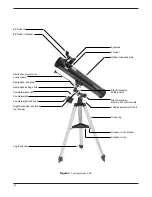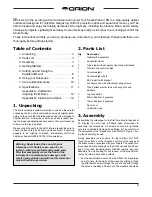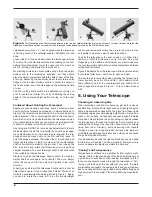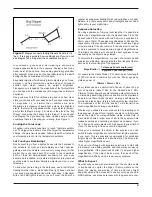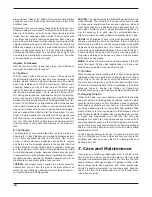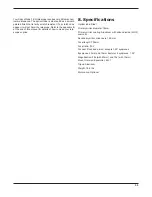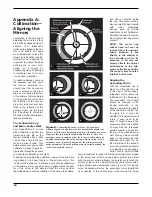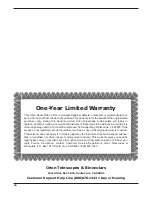
13
counter-clockwise will move the secondary mirror toward the
primary mirror.
When the secondary mirror is centered in the focuser draw-
tube, rotate the secondary mirror holder until the reflection of
the primary mirror is as centered in the secondary mirror as
possible. It may not be perfectly centered, but that is OK. Now
tighten the three small alignment screws equally to secure the
secondary mirror in that position.
If the entire primary mirror reflection is not visible in the sec-
ondary mirror, as in Figure 8c, you will need to adjust the tilt of
the secondary mirror. This is done by alternately loosening
one of the three alignment screws while tightening the other
two, as depicted in Figure 10. The goal is to center the primary
mirror reflection in the secondary mirror, as in Figure 8d. Don’t
worry that the reflection of the secondary mirror (the smallest
circle, with the collimation cap “dot” in the center) is off-center.
You will fix that in the next step.
Adjusting the Primary Mirror
The final adjustment is made to the primary mirror. It will need
adjustment if, as in Figure 8d, the secondary mirror is cen-
tered under the focuser and the reflection of the primary mir-
ror is centered in the secondary mirror, but the small reflection
of the secondary mirror (with the “dot” of the collimation cap)
is off-center.
The tilt of the primary mirror is adjusted using the three sets
of two collimation screws on the back end of the optical tube.
Adjusting the tilt of the mirror requires a “push-pull” technique
involving adjustment of each set of collimation screws. Loosen
the flush screw one full turn, and then tighten the adjacent
raised screw until it is tight as in Figure 11 (do not overtight-
en). Look into the focuser and see if the secondary mirror
reflection has moved closer to the center of the primary. You
can tell this easily with the collimation cap and mirror center
mark by simply watching to see if the “dot” of the collimation
cap is moving closer or farther away from the ring on the cen-
ter of the primary mirror. Repeat this process on the other two
sets of collimation screws, if necessary. It will take a little trial
and error to get a feel for how to tilt the mirror in this way.
When you have the dot centered as much as possible in the
ring, your primary mirror is collimated. The view through the
collimation cap should resemble Figure 8e. Make sure all the
collimation screws are tight (but do not overtighten), to secure
the mirror tilt.
A simple star test will tell you whether the optics are accurate-
ly collimated.
Figure 9.
To center the secondary mirror under the focuser, hold
the secondary in place with your fingers while adjusting the primary
screw with a Phillips head screwdriver. Do not touch the mirror’s
surface.
Figure 10.
Adjust the tilt of the secondary mirror by loosening or
tightening the three alignment screws with a small Phillips head
screwdriver.
Figure 11.
Loosen one screw on the back of the optical tube one
full turn and tighten the other screw “in the set” until tight to adjust
the primary mirror.
Summary of Contents for SpaceProbe 3 EQ 9844
Page 15: ...15 ...


